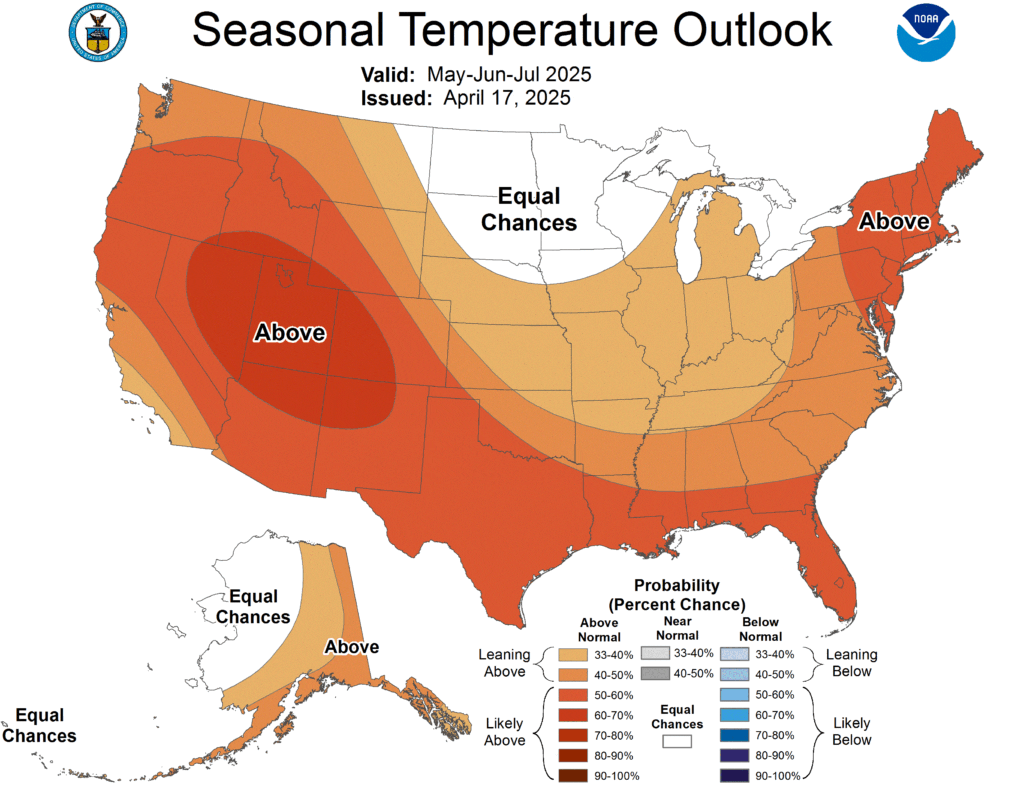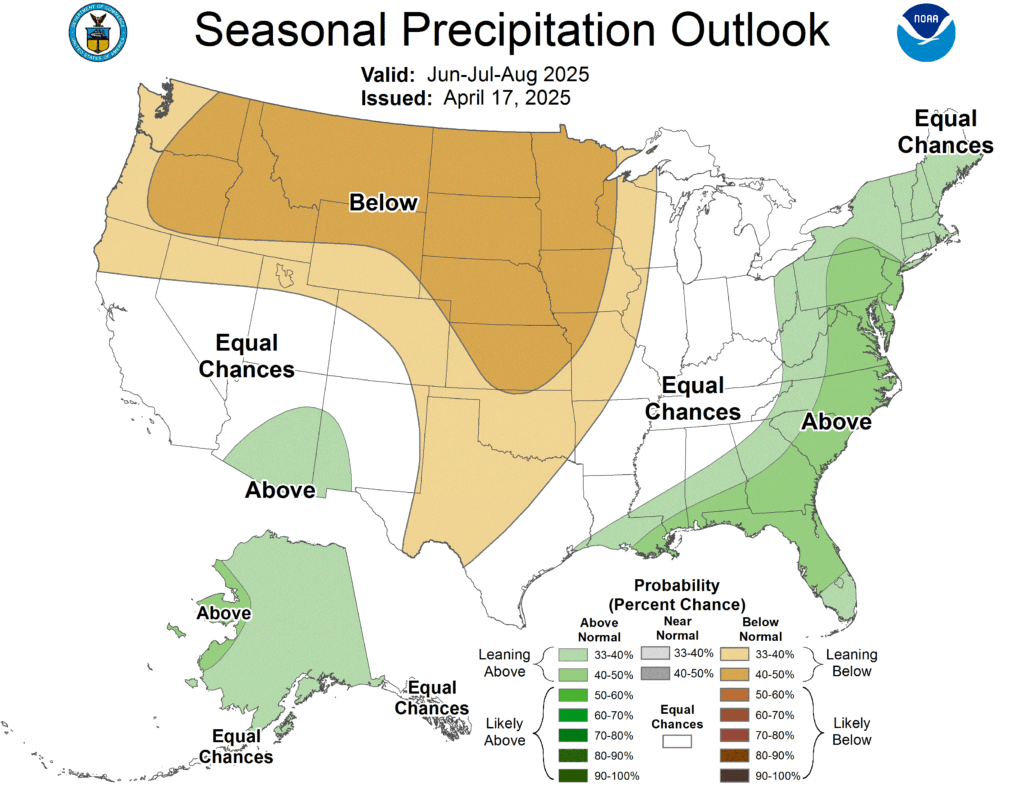The latest Great Lakes Water Levels update from the U.S. Army Corps of Engineers shows that water levels across the Great Lakes are continuing their seasonal rise, though variability remains between basins.
Great Lakes Water Levels Update – Weather Trends

Over the past week, northern portions of the Great Lakes Basin experienced cooler-than-average temperatures, 2 to 4 degrees below normal, while central and eastern areas were about 4 degrees above normal. Notably warm weather hit cities like Toledo and Detroit, reaching the mid-80s Fahrenheit late last week. Rainfall was slightly above average in the northern basin, with areas like Houghton and Marquette, Michigan, receiving 2 to 3 inches of precipitation. Looking ahead, temperatures are expected to dip slightly over the southern half of the basin before rebounding to near-normal levels by early next week. Rain is forecast through Friday into Saturday, with another system expected by mid-next week.
The Climate Prediction Center’s outlook for April, May, and June (Figure 3) forecasts that in the eastern region of the basin, temperatures will likely exceed normal levels, whereas the remainder of the basin is predicted to have an equal probability of experiencing above, below, or near normal temperatures.

Additionally, the seasonal precipitation forecast suggests a heightened likelihood of above-normal precipitation in certain areas of Michigan, Ohio, and Indiana, while the rest of the basin exhibits equal probabilities of above-normal or below-normal rainfall.
Current Lake Levels
As of May 2, 2025, all the Great Lakes are above their levels from a month ago, with increases of 4 to 6 inches as the spring rise continues. However, lake levels are generally lower than one year ago, with declines ranging from 3 to 9 inches, depending on the lake.
- Lake Superior, Michigan-Huron, and Ontario are 6 to 7 inches below their long-term May averages.
- Lake St. Clair is near its historical average.
- Lake Erie sits 2 inches above its May average.
Forecasts suggest lake levels will keep rising into June, with expected gains of 1 to 5 inches.
Outflow and Channel Forecasts
Outflows from Lake Superior into the St. Marys River and from Lake Michigan-Huron into the St. Clair River are expected to be below average for May. In contrast, Lake Erie’s outflow into the Niagara River and Lake Ontario’s outflow into the St. Lawrence River are projected to be above average.
Alerts and Navigation
Water levels remain above their lowest recorded monthly means but well below record highs. Mariners and users of connecting waterways, particularly the St. Lawrence River, should consult updated navigation charts and heed alerts for changing water conditions.
Quick Stats (as of May 2, 2025):
- Superior: 601.12 ft (4 inches above last month; 3 inches below last year)
- Michigan-Huron: 578.54 ft (4 inches above last month; 7 inches below last year)
- St. Clair: 574.70 ft (4 inches above last month; 9 inches below last year)
- Erie: 572.15 ft (5 inches above last month; 9 inches below last year)
- Ontario: 245.60 ft (6 inches above last month; 4 inches below last year)
While Lake Erie and Ontario remain slightly above their historical averages for May, the other lakes generally sit below their long-term norms.
Stakeholders are encouraged to visit the Detroit District’s Great Lakes homepage and other linked resources for continuous updates and detailed navigation information.
Superior

Current Level: 601.61 feet
Trend: increasing (+0.40 feet over the past 3 months)
Michigan-Huron

Current Level: 578.87 feet
Trend: decreasing (-0.89 feet over the past 3 months)
St. Clair

Current Level: 574.57 feet
Trend: increasing (+1.77 feet over the past 3 months)
Erie

Current Level: 571.72 feet
Trend: increasing (+1.18 feet over the past 3 months)
Ontario

Current Level: 244.39 feet
Trend: decreasing (-0.82 feet over the past 3 months)
Monitoring these levels is vital for understanding the health of these waterways.

